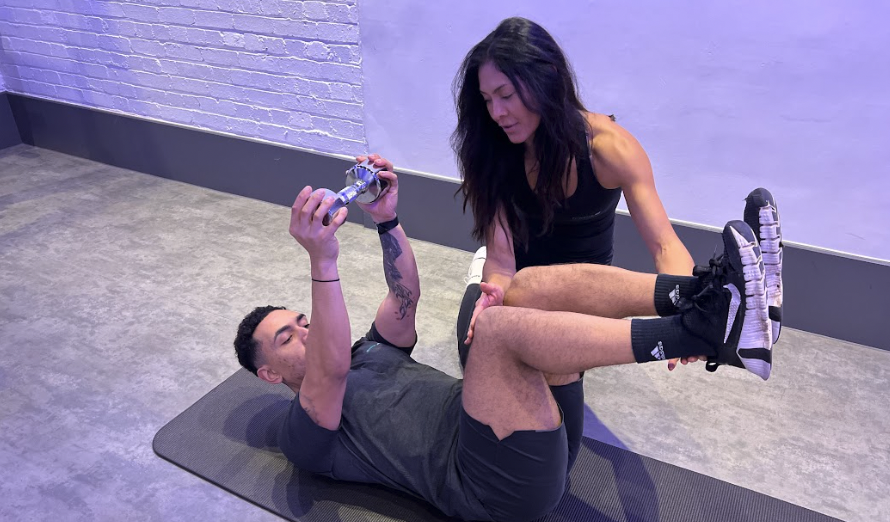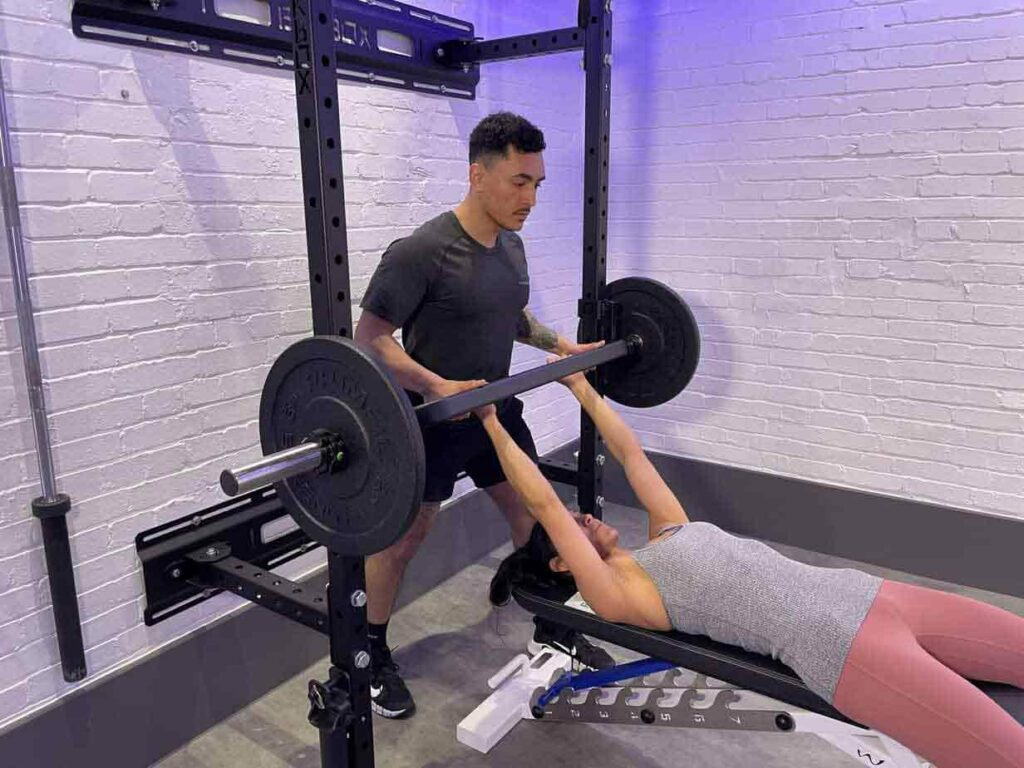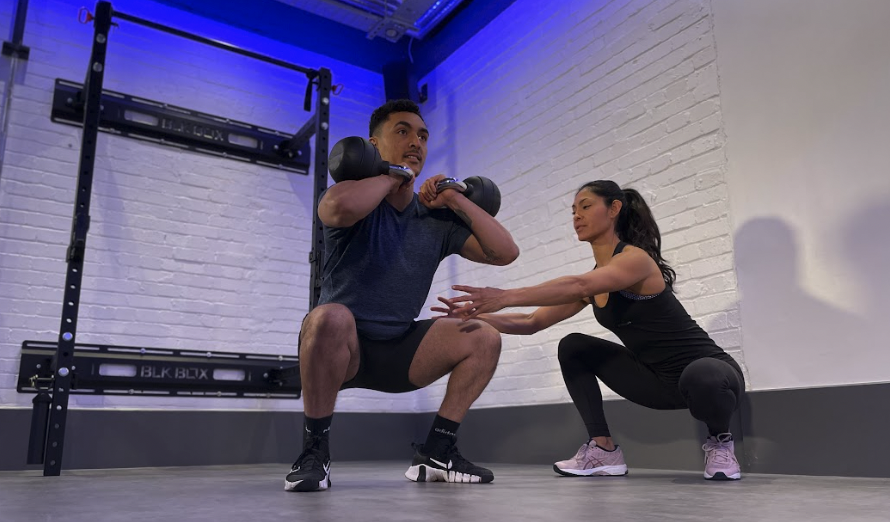The general definition of strength training can be concluded as any physical movements that use your body weight or a resistance to increase muscle mass, strength and endurance.
Regardless of your goal, the aim of strength training is to put your muscles under tension to allow neuromuscular adaptations and stimulate muscle growth.
With regular sessions your body adapts to the training, so regular progressive overloads allow you to improve not only your technique but also strength in movements that are functional and allow you to work towards the lifestyle you want to lead. Whether this be carrying less fat mass, looking and feeling more toned or getting rid of that nagging back and knee pain you’ve had for many years.
Our everyday lives and habits can be huge stressors on our body and can eventually cause deterioration in our health and performance. Performance not just being for athletes – but being able to walk up stairs, sitting down and standing up with ease and getting in and out of a car without requiring assistance.
In this article we will be covering the what, why and how of strength training for beginners.
Why is strength training for beginners important?

Strength training is important for beginners as no matter what your goal is, strength training will be vital to achieving it. Whether that be fat loss, muscle gain, avoiding injury or recovering from an injury. Strength training is key for longevity, improving health and maintaining a healthy and functional lifestyle.
The basic principle of strength training is to maintain and/or increase muscle mass, in turn increasing bone density making you less susceptible to injury but also increasing your natural metabolism. The more muscle you have, the more calories your body burns when just resting, to stay alive and perform basic daily functions.
What are some benefits of strength training for beginners?
Increasing mobility, improving posture and enhancing how your body moves and feels is a key benefit to strength training. As I said above, no matter what your goal is I can guarantee strength training is the answer to achieving it. Reducing body fat, looking more toned or recovering from an injury – just to name a few.

Strength training is the only way to increase muscle mass and strength.
Increased muscle mass = more calories burnt when resting = an increased metabolism.
Increased strength = bone density and strength through your tendons and ligaments =increased control and stability in vital movement patterns such as sitting, standing, walking and climbing stairs = reduction in injuries from these movements.
Increased muscle mass = a more toned and tighter look and feel.
Strength training requires less commitment and has lasting benefits by permanently improving muscle cells compared to cardio. Cardio can be highly repetitive and can have a very high impact on joints. Not to mention the increased risk of repetitive strain injuries such as shin splints or plantar fasciitis.
Strength training can be progressively overloaded in a controlled and effective manner that means you can reach your goals safely.
What are some basic strength training exercises?
When starting a strength program for the first time I would always advise seeking professional help for a few weeks. Strength training can be a bit daunting when starting out but it doesn’t need to be.

When first starting out, nailing technique by just using your bodyweight is enough to elicit some change. As you get more confident using kettlebells, dumbbells and resistance machines can help you progressively overload any exercises that you are doing to continue to elicit an improvement in strength.
Some starter exercises when beginning your strength journey can be as follows:
- Box squats (knee dominant, anterior chain)
- Glute Bridges (Hip dominant, posterior chain)
- Incline Push Ups (Upper Body Push)
- Seated Cable Rows (Upper body Pull)
- Deadbugs (Core)
These exercises can then gradually be made harder over time by increasing resistance, increasing the number of repetitions and/or reducing rest etc.
What does a beginners strength workout look like?
A beginners strength workout would be a ‘Total Body Session’. Hitting the main movement patterns of lower body push and pull and upper body push and pull as well as some core.
For example:
Warm Up:
Movement prep to increase blood flow and heart rate ready for the sessions and to work on any corrective exercises such as increasing movement through hips or ‘activation’ of the glutes.
Block 1: (3-4 rounds)
- Box squats x10-12
- Incline Push Ups x10-12
- Deadbugs x20
Block 2: (3-4 rounds)
- Glute Bridges x10-12
- Seated Cable Rows x12-15
- Shoulder Taps x20
Will strength training make me look too muscly?
The simple answer is no. Just because you start to lift weights doesn’t mean you will accidentally become Mr or Ms Olympia. The same as if you learn to drive and accidentally become an F1 driver. It’s not going to happen. Unless that is your goal and then you will need specialist coaching.
It is true that strength training can elicit muscle hypertrophy leading to size increase, however in the first few weeks of strength training it is the nervous system that mainly sees an improvement. An increase in the nervous system response results in more motor unit recruitment and makes you stronger because the brain tells the muscle to recruit more neurons.
Women also won’t ‘bulk up’ like men as they have different hormone profiles. Men have more testosterone which promotes muscle growth. For women, both fortunately and unfortunately, their hormone profile allows them to tone without getting bulky, but also deters them from losing all the fat they may desire as easily as men. A clean diet will promote this wanted reduction in body fat %.
Would you like to hear more about strength training for beginners? Why not contact us!

